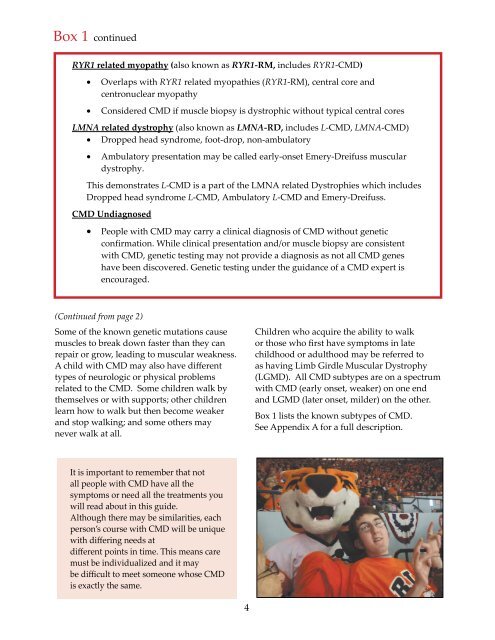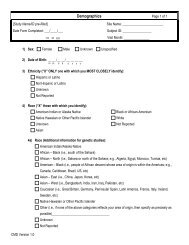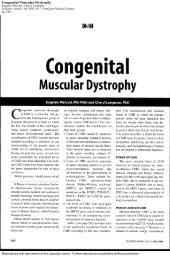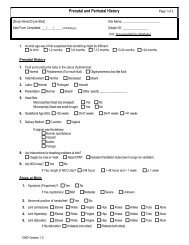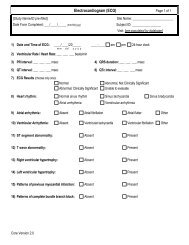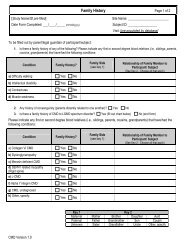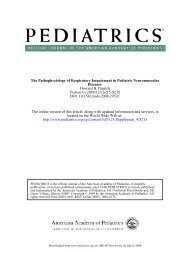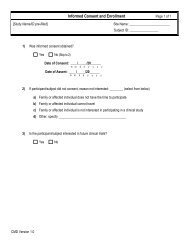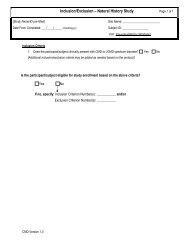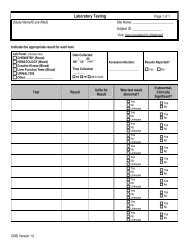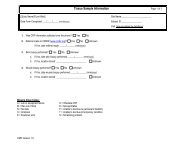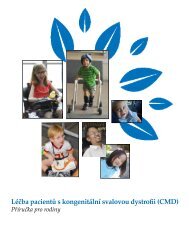The Management of Congenital Muscular Dystrophy ... - Cure CMD
The Management of Congenital Muscular Dystrophy ... - Cure CMD
The Management of Congenital Muscular Dystrophy ... - Cure CMD
Create successful ePaper yourself
Turn your PDF publications into a flip-book with our unique Google optimized e-Paper software.
Box 1 continuedRYR1 related myopathy (also known as RYR1-RM, includes RYR1-<strong>CMD</strong>)Overlaps with RYR1 related myopathies (RYR1-RM), central core andcentronuclear myopathyConsidered <strong>CMD</strong> if muscle biopsy is dystrophic without typical central coresLMNA related dystrophy (also known as LMNA-RD, includes L-<strong>CMD</strong>, LMNA-<strong>CMD</strong>) Dropped head syndrome, foot-drop, non-ambulatoryAmbulatory presentation may be called early-onset Emery-Dreifuss musculardystrophy.This demonstrates L-<strong>CMD</strong> is a part <strong>of</strong> the LMNA related Dystrophies which includesDropped head syndrome L-<strong>CMD</strong>, Ambulatory L-<strong>CMD</strong> and Emery-Dreifuss.<strong>CMD</strong> UndiagnosedPeople with <strong>CMD</strong> may carry a clinical diagnosis <strong>of</strong> <strong>CMD</strong> without geneticconfirmation. While clinical presentation and/or muscle biopsy are consistentwith <strong>CMD</strong>, genetic testing may not provide a diagnosis as not all <strong>CMD</strong> geneshave been discovered. Genetic testing under the guidance <strong>of</strong> a <strong>CMD</strong> expert isencouraged.(Continued from page 2)Some <strong>of</strong> the known genetic mutations causemuscles to break down faster than they canrepair or grow, leading to muscular weakness.A child with <strong>CMD</strong> may also have differenttypes <strong>of</strong> neurologic or physical problemsrelated to the <strong>CMD</strong>. Some children walk bythemselves or with supports; other childrenlearn how to walk but then become weakerand stop walking; and some others maynever walk at all.Children who acquire the ability to walkor those who first have symptoms in latechildhood or adulthood may be referred toas having Limb Girdle <strong>Muscular</strong> <strong>Dystrophy</strong>(LGMD). All <strong>CMD</strong> subtypes are on a spectrumwith <strong>CMD</strong> (early onset, weaker) on one endand LGMD (later onset, milder) on the other.Box 1 lists the known subtypes <strong>of</strong> <strong>CMD</strong>.See Appendix A for a full description.It is important to remember that notall people with <strong>CMD</strong> have all thesymptoms or need all the treatments youwill read about in this guide.Although there may be similarities, eachperson’s course with <strong>CMD</strong> will be uniquewith differing needs atdifferent points in time. This means caremust be individualized and it maybe difficult to meet someone whose <strong>CMD</strong>is exactly the same.How to Use this Document4 5


